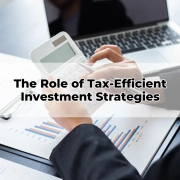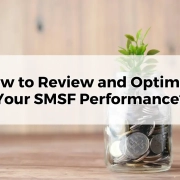Is the First Home Super Saver scheme worth it?
Table of Contents
ToggleAre you dreaming of owning your first home in Australia? The journey to becoming a homeowner is an exciting one, but it often comes with its fair share of financial considerations. That’s where the First Home Super Saver scheme steps in. If you’ve been hearing whispers about FHSS and wondering if it’s the right path for you, you’re in the right place.
In this blog post, we’re going to dive deep into the world of the First Home Super Saver scheme and explore whether it’s truly worth your while.
What is the First Home Super Saver Scheme?
Imagine a savings strategy that takes advantage of your superannuation fund to help you achieve your dream of owning a home. That’s the essence of the First Home Super Saver scheme, often referred to as FHSS. This scheme is designed to give you a leg up in saving for your first home by harnessing the power of your super.
Instead of relying solely on your regular savings, FHSS allows you to contribute extra money into your super fund specifically for the purpose of buying your first home. These contributions are divided into two categories:
Concessional Contributions
These are the payments made before tax is taken out. They include salary sacrifice contributions and any contributions your employer makes on your behalf. The beauty of these contributions is that they’re taxed at a lower rate within your super fund, potentially helping your money grow faster.
Non-concessional Contributions
These are payments made from your take-home pay, on which you’ve already paid tax. While they’re not as tax-efficient as concessional contributions, they still provide a way to boost your savings.
The intriguing part is that once your contributions are in your super fund, they’re invested. This means your money has the chance to grow over time through investment returns, which can potentially add a significant boost to your savings.
When the time comes to step into the realm of homeownership, you’re allowed to withdraw these FHSS contributions along with associated earnings, subject to certain limits and conditions. The withdrawals are taxed at your marginal tax rate minus a 30% offset, which can make the money you withdraw even more valuable for your home-buying journey.
Benefits of the First Home Super Saver Scheme
Imagine a faster route to turning the key in your very own front door. The FHSS scheme doesn’t just sound promising; it’s packed with benefits that could make your dream of homeownership a reality sooner than you thought possible. Let’s take a closer look at what makes this scheme so enticing:
Tax benefits
One of the standout perks of FHSS revolves around taxes. When you contribute to the scheme, the money you put in before tax (concessional contributions) gets taxed at a lower rate within your super fund. This can potentially leave you with more money working for you, thanks to the magic of compounding.
Faster saving
The name of the game is efficiency. By making extra contributions through FHSS, you could potentially accumulate a larger sum in a shorter time. Think of it as turbocharging your savings engine, helping you reach your goal of buying your first home faster than traditional saving methods.
Partner contributions
FHSS isn’t a solo endeavour. If you’re in a partnership, both you and your partner can contribute to each other’s FHSS accounts, combining forces to amass funds at an accelerated pace. This collaborative approach can put homeownership within closer reach for both of you.
Investment potential
Once your contributions are within the super fund, they’re not just sitting idle. They’re invested in various assets like shares and bonds, giving your savings the potential to grow over time. This investment growth could provide an additional boost to your overall savings pool.
Tax-efficient withdrawals
When the time comes to take your savings out to buy your first home, the withdrawals are taxed at a reduced rate. This can make your saved funds even more valuable, potentially allowing you to maximise your purchasing power.
Flexibility and control
FHSS doesn’t lock you into a rigid savings plan. You have control over how much you contribute, when you contribute, and how you want to use the funds once you’re ready to buy a home. This flexibility can be especially useful if your financial situation changes over time.
Eligibility and contribution limits
Before you jump into the FHSS scheme headfirst, it’s important to know if you meet the eligibility criteria and understand the contribution limits.
Eligibility criteria
To participate in the FHSS scheme, you need to meet a few basic requirements:
- You must be 18 years old or older.
- You can’t have previously owned property in Australia (unless it was inherited).
- You must intend to live in the property you buy as soon as practicable after it becomes practical to do so.
If you’re part of a partnership, both you and your partner must meet these criteria individually. It’s also crucial to remember that each person can only use the FHSS scheme once, so make sure you’re fully ready to take advantage of it.
Contribution limits
FHSS has set limits on how much you can contribute. These limits ensure the scheme remains fair and accessible to all. The annual limits for contributions are as follows:
- Concessional Contributions (before tax): Up to $15,000 per financial year.
- Non-Concessional Contributions (after tax): Up to $30,000 in total.
Keep in mind that these contribution limits are combined for all individuals contributing towards your goal, which means your personal contributions, employer contributions, and partner contributions all count towards these caps.
It’s important to note that exceeding these limits might result in penalties or additional tax. Therefore, it’s wise to plan your contributions carefully to make the most of the scheme while staying within the specified limits.

Withdrawal process
You’ve diligently contributed to the FHSS scheme, and now the exciting moment has arrived: accessing your hard-earned savings to make your first home a reality. The withdrawal process is a key phase in your FHSS journey, and we’re here to guide you through it in a simple and straightforward manner:
When can you withdraw?
Once you’re ready to take the plunge into homeownership, you can apply to withdraw the funds you’ve saved through FHSS. Your release request should be submitted within 14 days after finalising a property contract. Nevertheless, it’s essential to have an FHSS determination prior to committing to any property contract. Your FHSS determination will tell you the maximum amount you’re eligible to withdraw.
You can include up to $50,000 of qualifying contributions in your total maximum releasable amount over all years. Additionally, for each financial year, you can allocate up to $15,000 of eligible contributions towards your FHSS maximum releasable amount.
You have the option to make withdrawals while considering both the annual and overall limits. These withdrawals are subject to the following conditions:
- You can withdraw 100% of your eligible personal voluntary super contributions for which you haven’t claimed a tax deduction (non-concessional contributions).
- You are eligible to withdraw 85% of your eligible salary sacrifice contributions (concessional contributions).
- 85% withdrawal is allowed for eligible personal voluntary super contributions for which you have claimed a tax deduction (concessional contributions).
- Additionally, there is an allowance for withdrawals based on the presumed earnings linked to the aforementioned contributions.
ATO will withhold tax from the amount you receive in order to help you in meeting your annual tax liabilities.
Keep in mind that you can only request a release under the FHSS scheme once. Once you make your release request, it might take around 15 to 20 business days for you to receive the money. Remember to keep this time frame in mind when you begin planning to buy a home.
The withdrawal process
Here’s a simplified version of how the withdrawal process works:
- Lodge an application through your myGov account, indicating your intention to withdraw under the FHSS scheme.
- The Australian Taxation Office (ATO) will provide you with a determination of your eligible FHSS amount, which includes your contributions plus associated earnings.
- If you’re ready to proceed, the ATO will issue a release authority to your super fund to pay out the determined amount. The amount will be deposited into your nominated bank account.
- The super fund will make the payment directly to you, and the ATO will withhold the required amount of tax.
Note: Notify ATO through myGov within 28 days once you’ve entered into a contract to buy or build your home (prior to settlement). It’s essential to provide them with the contract signing date and the property address. Failure to notify us of these actions or deciding to retain the FHSS amount might make you liable for FHSS tax.
Tax implications
It’s important to understand the tax implications of withdrawing FHSS funds. The withdrawn amount is subject to your marginal tax rate minus a 30% tax offset. For instance, if your tax rate is 39%, inclusive of the Medicare levy, we will withhold 9% withholding tax. This means that you’ll likely pay less tax on the withdrawn amount compared to your regular income. However, the specific tax rate will depend on your individual circumstances.
Remember, the withdrawn funds must be used to purchase or construct your first home. If the funds are used for any other purpose, penalties may apply.
Planning your withdrawal
As you plan your FHSS withdrawal, it’s a good idea to coordinate with your conveyancer or legal adviser to ensure a smooth transition into homeownership. The timing of your withdrawal should align with your property purchase plans to maximise the benefits of the scheme.
Understanding the withdrawal process is a crucial step in harnessing the benefits of the First Home Super Saver scheme. With the right preparation and careful planning, you can turn your savings into the foundation of your very own home sweet home.

Potential drawbacks of the First Home Super Saver Scheme
While the FHSS scheme offers an enticing avenue for accelerating your journey towards homeownership, it’s essential to explore both sides of the coin. Just as with any financial decision, there are potential drawbacks to consider. Here’s a clear breakdown of these potential downsides:
Preservation of funds
The main purpose of the FHSS scheme is to help you save for your first home. This means that the funds you contribute must be preserved for this specific purpose. If your plans change, and you decide not to buy a home or delay your purchase, you might find your savings tied up in your super fund until you meet the relevant criteria.
Market fluctuations
While your FHSS contributions are invested within your super fund, they are subject to market fluctuations. The value of your investments can rise or fall based on market conditions. This means that the final amount available for withdrawal may be different from what you initially anticipated, depending on the performance of your investments.
Complexity
The world of superannuation and taxation can be complex, and the FHSS scheme is no exception. Understanding the rules, eligibility criteria, and tax implications might require some effort. It’s important to invest the time to grasp these intricacies fully to avoid any surprises down the road.
Timing and property market conditions
The effectiveness of FHSS depends on the timing of your withdrawals and the state of the property market. Fluctuations in property prices can impact the purchasing power of your savings. It’s worth considering whether the property market aligns with your plans and goals.
Opportunity cost
Contributing to FHSS means diverting funds from other potential investment opportunities. Depending on your financial situation and risk tolerance, there might be alternative investment options that could yield higher returns.
Decision flexibility
Once you start contributing to FHSS, you commit to a specific path of using these funds for homeownership. This might limit your flexibility in making other financial decisions that align better with changing circumstances or goals.
Understanding these potential drawbacks is an essential part of making an informed decision about whether the FHSS scheme is the right fit for you. As you weigh the pros and cons, remember that everyone’s financial situation is unique. It’s wise to consider seeking professional advice to ensure your choices align with your overall financial strategy.
How does the FHSS compare to other saving options?
As you contemplate the FHSS scheme, it’s only natural to wonder how it measures up against other saving strategies. Let’s break down how FHSS stacks up against some common alternatives, so you can make an informed decision that aligns with your financial goals:
FHSS vs. Regular savings accounts
- FHSS: Offers tax advantages through concessional contributions, potentially accelerating your savings growth.
- Regular Savings: Provides more immediate access to your funds without the eligibility criteria and withdrawal restrictions of FHSS.
- Consider: If you’re willing to commit to the FHSS scheme for the long term and benefit from potential tax advantages, or if you need flexibility and quicker access to your savings.
FHSS vs. Investment funds
- FHSS: Allows your contributions to be invested within your super fund, potentially earning investment returns.
- Investment Funds: Offers a wider range of investment options and the potential for higher returns, but without the tax advantages of FHSS.
- Consider: Your risk tolerance and investment knowledge. FHSS provides a structured approach with tax benefits, while investment funds offer more diversity and potential for growth.
FHSS vs. Regular home loan savings
- FHSS: Offers tax advantages and the potential for accelerated savings growth through concessional contributions.
- Regular Home Loan Savings: Directs your funds towards reducing your mortgage, helping you own your home outright sooner.
- Consider: Whether you prefer to save with potential tax advantages first or prioritise paying off your home loan sooner.
FHSS vs. Real estate investment
- FHSS: Focuses on saving for your own residence, providing potential tax benefits.
- Real Estate Investment: Involves purchasing property for investment purposes, potentially generating rental income and capital appreciation.
- Consider: Your investment goals. FHSS is designed for your primary residence, while real estate investment diversifies your portfolio.
FHSS vs. Term deposits
- FHSS: Provides the potential for higher returns through investments, along with tax advantages.
- Term Deposits: Offers a fixed interest rate over a specific term, but lacks the investment potential of FHSS.
- Consider: Your willingness to lock in your funds versus the potential for higher returns through investment.
Ultimately, the best saving option for you depends on your individual financial situation, goals, and preferences. The FHSS scheme offers unique tax advantages, investment potential, and faster saving opportunities.
FAQs
The ATO will grant you an automatic 12-month extension to finalise the signing of a property contract or to re-contribute to your super fund. This extension will be officially communicated to you in writing. Your total timeframe to complete either signing the property contract or making a re-contribution to your super fund cannot exceed 24 months from the moment you initiate the withdrawal of your FHSS amount.
Utilising other state or federal home purchasing schemes will not impact your eligibility for the FHSS scheme.

Remember that there’s no one-size-fits-all answer when it comes to FHSS. Your individual circumstances, goals, and risk tolerance will shape your decision. Whether you decide to embrace FHSS as your roadmap to homeownership or explore other avenues, the key is to make a choice that empowers you to realise your dream.









